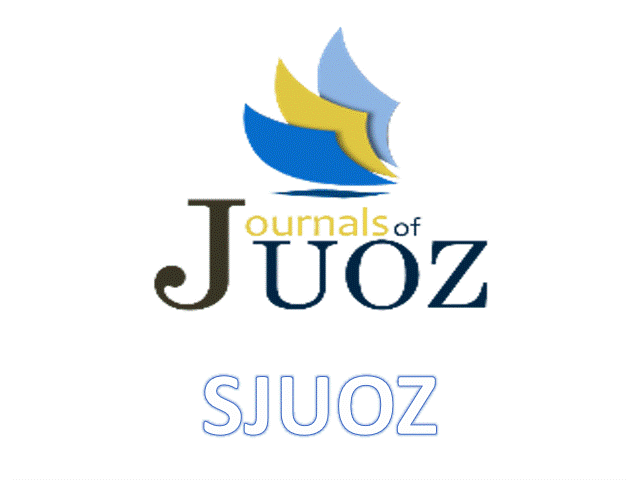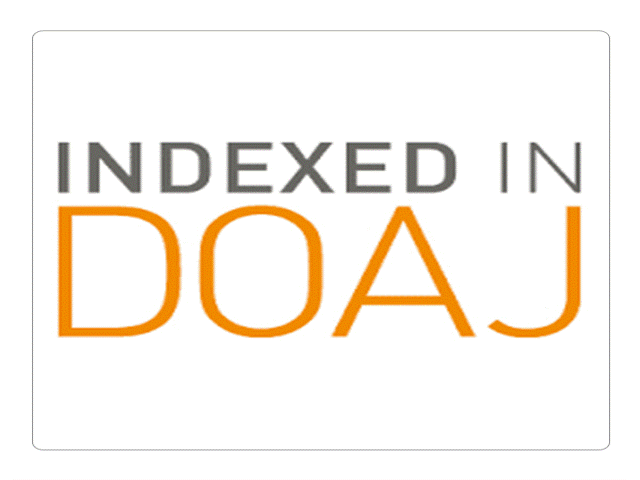Risk Factors Association for MRSA Nasal Colonization in Preoperative Patients in Azadi Teaching Hospital-Duhok, Kurdistan Region, Iraq
DOI:
https://doi.org/10.25271/sjuoz.2020.8.3.712Keywords:
Risk factors, MRSA, Nasal Colonization, Preoperative patients, DuhokAbstract
Background: Nasal colonization with Methicillin-resistant Staphylococcus aureus (MRSA) can predispose to subsequent infections in surgical and non-surgical patients, making the management challenging with increased rates of morbidity, mortality and cost burden.
Objectives: The present study was carried out to evaluate the risk factors of MRSA nasal colonization in preoperative patients in Azadi Teaching Hospital in Duhok Province - Kurdistan Region-Iraq.
Methods: Nasal swabs were obtained from 150 patients after completing a questionnaire. Conventional laboratory methods were carried out to identify Staphylococcus aureus (S. aureus) and antimicrobial susceptibility test was conducted for recognizing MRSA isolates.
Results: A total of 41 (27.3%) of 150 patients were MRSA carriers. The mean age of participants MRSA carriers was 35.27±20.40 years old. The highest prevalence rate of nasal colonization with MRSA was in males (27.94%) than females (26.82%). In logistic regression analysis, no significant differences was detected between MRSA carriage and the associated risk factors including age [OR: 0.99 (95 % CI: 0.97- 1.01); P = 0.45], gender [OR: 1.05 (95 % CI: 0.51- 2.17); P = 0.87] and medical comorbidities [OR: 1.11 (95 % CI: 0.42- 2.92); P = 0.82].
Conclusions: Age, gender and medical comorbidities were not associated common risk factors for nasal colonization of MRSA in preoperative patients. This study should be considered preliminary and studies with larger sample sizes and with using advance molecular tools are needed in the future.
Downloads
References
ALTıNBAS, A., SHORBAGI, A., ASCıOGLU, S., ZARAKOLU, P. & CETINKAYA-SARDAN, Y. 2013. Risk Factors for Intensive Care Unit Acquired Nasal Colonization of MRSA and Its Impact on MRSA Infection. Journal of Clinical Laboratory Analysis, 27, 412-417.
ASSAFI, M., MOHAMMED, Q. & HUSSEIN, N. 2015. Nasal Carriage Rates of Staphylococcus aureus and CA-Methicillin Resistant Staphylococcus aureus among University Students. Journal of Microbiology Research, 5, 123-127.
BERROCAL, M. H., LÓPEZ, V., ACABÁ, L. A. & ACABÁ, A. 2012. Prevalence and risk factors of methicillin-resistant Staphylococcus aureus nasal carriage among ophthalmology outpatients in Puerto Rico. Investigative Ophthalmology & Visual Science, 53, 6262-6262.
BONCOMPAIN, C. A., SUÁREZ, C. A. & MORBIDONI, H. R. 2017. Staphylococcus aureus nasal carriage in health care workers: First report from a major public hospital in Argentina. Revista Argentina de Microbiología, 49, 125-131.
CHEN, C.-S., CHEN, C.-Y. & HUANG, Y.-C. 2012. Nasal carriage rate and molecular epidemiology of methicillin-resistant Staphylococcus aureus among medical students at a Taiwanese university. International Journal of Infectious Diseases, 16, e799-e803.
CHOI, S. W., LEE, J. C., KIM, J., KIM, J. E., BAEK, M. J., PARK, S. Y., PARK, S. & SHIN, B. J. 2019. Prevalence and Risk Factors for Positive Nasal Methicillin-Resistant Staphylococcus aureus Carriage Among Orthopedic Patients in Korea. J Clin Med, 8.
DATTA, R., SHAH, A., HUANG, S. S., CUI, E., NGUYEN, V., WELBOURNE, S. J., QUAN, K. A. & THRUPP, L. 2014. High nasal burden of methicillin-resistant Staphylococcus aureus increases risk of invasive disease. Journal of clinical microbiology, 52, 312-314.
DIEKEMA, D. J., PFALLER, M. A., SCHMITZ, F. J., SMAYEVSKY, J., BELL, J., JONES, R. N. & BEACH, M. 2001. Survey of infections due to Staphylococcus species: frequency of occurrence and antimicrobial susceptibility of isolates collected in the United States, Canada, Latin America, Europe, and the Western Pacific region for the SENTRY Antimicrobial Surveillance Program, 1997-1999. Clin Infect Dis, 32 Suppl 2, S114-32.
FISH, E. N. 2008. The X-files in immunity: sex-based differences predispose immune responses. Nat Rev Immunol, 8, 737-44.
GILLET, Y., ISSARTEL, B., VANHEMS, P., FOURNET, J. C., LINA, G., BES, M., VANDENESCH, F., PIÉMONT, Y., BROUSSE, N., FLORET, D. & ETIENNE, J. 2002. Association between Staphylococcus aureus strains carrying gene for Panton-Valentine leukocidin and highly lethal necrotising pneumonia in young immunocompetent patients. Lancet, 359, 753-9.
HADDADIN, A. S., FAPPIANO, S. A. & LIPSETT, P. A. 2002. Methicillin resistant Staphylococcus aureus (MRSA) in the intensive care unit. Postgrad Med J, 78, 385-92.
HALABLAB, M. A., HIJAZI, S. M., FAWZI, M. A. & ARAJ, G. F. 2010. Staphylococcus aureus nasal carriage rate and associated risk factors in individuals in the community. Epidemiol Infect, 138, 702-6.
HASHIM, A. E., ALI, A., ELMOLA, K., AMEEN, M., AWDALLA, H., EL HADY, A. & EL RAEY, F. 2018. Nasal colonization of methicillin-resistant <i>Staphylococcus aureus</i> among medical residents in Al-Azhar University Hospital, Damietta branch. Al-Azhar Assiut Medical Journal, 16, 87-95.
HIDRON, A. I., KOURBATOVA, E. V., HALVOSA, J. S., TERRELL, B. J., MCDOUGAL, L. K., TENOVER, F. C., BLUMBERG, H. M. & KING, M. D. 2005. Risk Factors for Colonization with Methicillin-Resistant Staphylococcus aureus (MRSA) in Patients Admitted to an Urban Hospital: Emergence of Community-Associated MRSA Nasal Carriage. Clinical Infectious Diseases, 41, 159-166.
HUMPHREYS, H., FITZPATICK, F. & HARVEY, B. J. 2015. Gender differences in rates of carriage and bloodstream infection caused by methicillin-resistant Staphylococcus aureus: are they real, do they matter and why? Clin Infect Dis, 61, 1708-14.
HUSSEIN, N. 2016. Prevalent Genotypes of Staphylococcus aureus Strains Isolated From Healthcare Workers in Duhok City, Kurdistan Region, Iraq. International Journal of Infection, 3.
HUSSEIN, N., SALIH, R. & RASHEED, N. 2019. Prevalence of Methicillin-Resistant Staphylococcus aureus in Hospitals and Community in Duhok, Kurdistan Region of Iraq. International Journal of Infection, In Press.
HUSSEIN, N. R., ASSAFI, M. S. & IJAZ, T. 2017. Methicillin-resistant Staphylococcus aureus nasal colonisation amongst healthcare workers in Kurdistan Region, Iraq. Journal of Global Antimicrobial Resistance, 9, 78-81.
HUSSEIN, N. R., BASHARAT, Z., MUHAMMED, A. H. & AL-DABBAGH, S. A. 2015. Comparative evaluation of MRSA nasal colonization epidemiology in the urban and rural secondary school community of Kurdistan, Iraq. PLoS One, 10, e0124920.
KADARIYA, J., THAPALIYA, D., BHATTA, S., MAHATARA, R. L., BEMPAH, S., DHAKAL, N. & SMITH, T. C. 2019. Multidrug-resistant Staphylococcus aureus Colonization in Healthy Adults Is more Common in Bhutanese Refugees in Nepal than Those Resettled in Ohio. BioMed research international, 2019, 5739247-5739247.
KONG, E. F., JOHNSON, J. K. & JABRA-RIZK, M. A. 2016. Community-Associated Methicillin-Resistant Staphylococcus aureus: An Enemy amidst Us. PLoS Pathog, 12, e1005837.
KONG, Y., YE, J., ZHOU, W., JIANG, Y., LIN, H., ZHANG, X., QIAN, J., ZHANG, Y., GE, H. & LI, Y. 2018. Prevalence of methicillin-resistant Staphylococcus aureus colonisation among healthcare workers at a tertiary care hospital in southeastern China. Journal of Global Antimicrobial Resistance, 15, 256-261.
KUEHNERT, M. J., KRUSZON-MORAN, D., HILL, H. A., MCQUILLAN, G., MCALLISTER, S. K., FOSHEIM, G., MCDOUGAL, L. K., CHAITRAM, J., JENSEN, B., FRIDKIN, S. K., KILLGORE, G. & TENOVER, F. C. 2006. Prevalence of Staphylococcus aureus Nasal Colonization in the United States, 2001–2002. The Journal of Infectious Diseases, 193, 172-179.
MUNCKHOF, W. J., NIMMO, G. R., SCHOONEVELDT, J. M., SCHLEBUSCH, S., STEPHENS, A. J., WILLIAMS, G., HUYGENS, F. & GIFFARD, P. 2009. Nasal carriage of Staphylococcus aureus, including community-associated methicillin-resistant strains, in Queensland adults. Clin Microbiol Infect, 15, 149-55.
OGUZKAYA-ARTAN, M., BAYKAN, Z., ARTAN, C. & AVSAROGULLARI, L. 2015. Prevalence and risk factors for methicillin resistant Staphylococcus aureus carriage among emergency department workers and bacterial contamination on touch surfaces in Erciyes University Hospital, Kayseri, Turkey. African health sciences, 15, 1289-1294.
PETERS, C., DULON, M., KLEINMÜLLER, O., NIENHAUS, A. & SCHABLON, A. 2017. MRSA Prevalence and Risk Factors among Health Personnel and Residents in Nursing Homes in Hamburg, Germany - A Cross-Sectional Study. PloS one, 12, e0169425-e0169425.
PETERS, C., DULON, M., NIENHAUS, A. & SCHABLON, A. 2019. Occupational Infection Risk with Multidrug-Resistant Organisms in Health Personnel-A Systematic Review. International journal of environmental research and public health, 16, 1983.
POURRAMEZAN, N., OHADIAN MOGHADAM, S. & POURMAND, M. R. 2019. Methicillin-resistant Staphylococcus aureus tracking spread among health-care workers and hospitalized patients in critical wards at a university hospital, Tehran, Iran. New Microbes and New Infections, 27, 29-35.
QIU, J., FENG, H., LU, J., XIANG, H., WANG, D., DONG, J., WANG, J., WANG, X., LIU, J. & DENG, X. 2010. Eugenol Reduces the Expression of Virulence-Related Exoproteins in <em>Staphylococcus aureus</em>. Applied and Environmental Microbiology, 76, 5846-5851.
SAKR, A., BRÉGEON, F., MÈGE, J.-L., ROLAIN, J.-M. & BLIN, O. 2018. Staphylococcus aureus Nasal Colonization: An Update on Mechanisms, Epidemiology, Risk Factors, and Subsequent Infections. Frontiers in microbiology, 9, 2419-2419.
SFEIR, M., OBEID, Y., EID, C., SALIBY, M., FARRA, A., FARHAT, H. & MOKHBAT, J. E. 2014. Prevalence of Staphylococcus aureus methicillin-sensitive and methicillin-resistant nasal and pharyngeal colonization in outpatients in Lebanon. Am J Infect Control, 42, 160-3.
SGANGA, G., TASCINI, C., SOZIO, E. & COLIZZA, S. 2017. Early recognition of methicillin-resistant Staphylococcus aureus surgical site infections using risk and protective factors identified by a group of Italian surgeons through Delphi method. World journal of emergency surgery : WJES, 12, 25-25.
SHARIR, R., TEITLER, N., LAVI, I. & RAZ, R. 2001. High-level handwashing compliance in a community teaching hospital: a challenge that can be met! J Hosp Infect, 49, 55-8.
TORRES, K., SAMPATHKUMAR, P. & SISKA, M. 2012. Risk Factor Score to Predict MRSA Colonization at Hospital Admission. American Journal of Infection Control, 40, e185.
VON EIFF, C., BECKER, K., MACHKA, K., STAMMER, H. & PETERS, G. 2001. Nasal carriage as a source of Staphylococcus aureus bacteremia. Study Group. N Engl J Med, 344, 11-6.
WANG, J.-T., LIAO, C.-H., FANG, C.-T., CHIE, W.-C., LAI, M.-S., LAUDERDALE, T.-L., LEE, W.-S., HUANG, J.-H. & CHANG, S.-C. 2009. Prevalence of and Risk Factors for Colonization by Methicillin-Resistant <em>Staphylococcus aureus</em> among Adults in Community Settings in Taiwan. Journal of Clinical Microbiology, 47, 2957-2963.
WERTHEIM, H. F., MELLES, D. C., VOS, M. C., VAN LEEUWEN, W., VAN BELKUM, A., VERBRUGH, H. A. & NOUWEN, J. L. 2005. The role of nasal carriage in Staphylococcus aureus infections. Lancet Infect Dis, 5, 751-62.
ZAFAR, U., JOHNSON, L. B., HANNA, M., RIEDERER, K., SHARMA, M., FAKIH, M. G., THIRUMOORTHI, M. C., FARJO, R. & KHATIB, R. 2007. Prevalence of nasal colonization among patients with community-associated methicillin-resistant Staphylococcus aureus infection and their household contacts. Infect Control Hosp Epidemiol, 28, 966-9.
ZETOLA, N., FRANCIS, J. S., NUERMBERGER, E. L. & BISHAI, W. R. 2005. Community-acquired meticillin-resistant Staphylococcus aureus: an emerging threat. The Lancet. Infectious diseases, 5, 275-286.
Downloads
Published
How to Cite
Issue
Section
License
Copyright (c) 2020 Warveen L. Abdulkareem, Nawfal R. Hussein, Ayad A. Mohammed, Sardar H. Arif, Ibrahim A. Naqid

This work is licensed under a Creative Commons Attribution 4.0 International License.
Authors who publish with this journal agree to the following terms:
- Authors retain copyright and grant the journal right of first publication with the work simultaneously licensed under a Creative Commons Attribution License [CC BY-NC-SA 4.0] that allows others to share the work with an acknowledgment of the work's authorship and initial publication in this journal.
- Authors are able to enter into separate, additional contractual arrangements for the non-exclusive distribution of the journal's published version of the work, with an acknowledgment of its initial publication in this journal.
- Authors are permitted and encouraged to post their work online.








